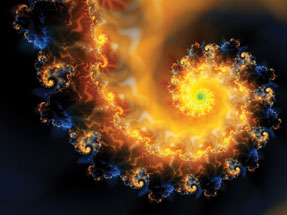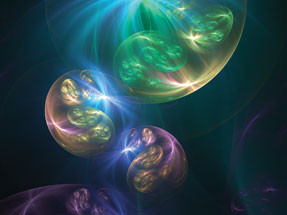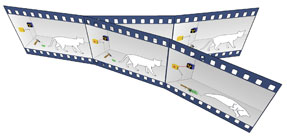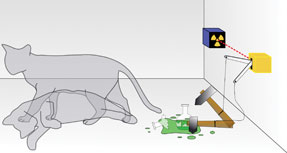Life
Gods Of Creation
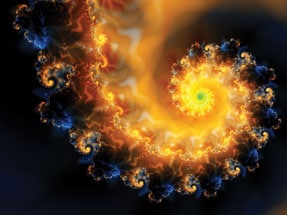
We may be the creators we have been searching for.
The modern scientific interpretation that our observations create physical reality seems patently absurd. Albert Einstein dismissed the seemingly ridiculous notion with the simple rebuttal that the moon is still there even if you don’t look at it. However, as a paradigm shift sweeps through the world of science, much to our dismay, we may have to disagree with the iconic scientist. A growing number of modern physicists are jumping on the bandwagon piloted by the quantum view, in which we, the sentient beings, are shaping our future as well as our past by contributing to this participatory universe.
The mysterious relation between observation and its outcome dates back to the early days of quantum mechanics. The Austrian physicist Erwin Schrödinger demonstrated this relation with a thought experiment popularly known as Schrödinger’s cat. He imagined a cat in a closed chamber, which had a vial of poisonous gas. The chamber also contains a radioactive element which may emit a particle. If the particle is emitted, a triggering mechanism would release the poisonous gas that would kill the cat. If not, the cat would be alive. To emphasize the conflict between quantum and classical worlds, Schrödinger posed the question “What could be known about the cat before opening the box?” The most simple and logical answer is that the cat may be dead or alive. We know that neither answer is true and real, until someone opens the box and looks inside. But, according to quantum mechanics, the cat is both dead and alive. This quantum paradox, like many others, demonstrates the limitations of our knowledge when dealing with the outside world. Until a definite conclusion is made, we have to cope with all possibilities — in other words uncertainty rules. Of course, Schrödinger was only trying to convey the inconsistency when the quantum view is extended to the classical world.
But, the important question is whether we influence the outcome with our observations? This has been established beyond doubt in experiments with fundamental particles, such as electrons. Quantum mechanics is credited as the most valuable product of scientific adventure. Originally designed to account for the behavior of fundamental particles, it has endured every experiment designed to prove or challenge its premises. But, many of its predictions, such as the cat experiment, defy common sense, which is the reason Einstein resisted the field, even though he played a major part in its development. He believed in a universe with underlying order and beauty — one that could be explored with mathematical equations. Einstein ridiculed the uncertainty and unpredictability of quantum mechanics with his famous quip that God does not play dice with the universe. Neils Bohr, one of the world’s leading quantum physicists, retorted, “Quit telling God what to do!” As it turns out, Krishna did express God’s views on the question, in his revelation to Arjuna in the Bhagavad Gita: “I am the beginning and the middle and the end also of all beings…. I am the game of dice.” At the heart of quantum mechanics is a wavefunction, a mathematical description of the physical system. In the case of Schrodinger’s cat, a wavefunction represents every possible state of the inhabitants of the chamber. The wave function is a superposition of all available possibilities, which includes the possibility that the cat could be dead or alive or any combination of every state between dead and alive. The observer will never be able to see simultaneously all the possibilities. When the observer does see the system, the wavefunction collapses, resulting in only a single outcome — dead or alive.
If you extend that argument, it leads to the question whether the universe exists if we don’t look at it. Stanford University physicist Andrei Linde says, “You need an observer who looks at the universe. In the absence of observers, our universe is dead.” Does that demand conscious observers for the existence of the universe? Not necessarily, since matter and radiation could play the same role as a conscious observer, the universe is a big quantum system. What we see is just one of the possible outcomes that happens to be the 14 billion years old universe. As observers, we are ignorant about the other possibilities and universes with different history and beings. Our observation collapsed the other states that existed along with this present one, and that collapse presents us our own universe. The light we see from distant galaxies do not create a reality unless it interacts with matter, whether it is with the atoms of our own eyes or with machines, such as telescopes. This is what many physicists consider an observation, not the mere act of looking at it by conscious beings. In the absence of interaction between energy and matter, there is no universe or even planets or beings. John Wheeler, the late pontiff of quantum mechanics, perhaps explained it best. According to him, most of the universe consists of huge clouds of uncertainty that have not yet interacted either with a conscious observer or even with some lump of inanimate matter. He sees the universe as a vast arena of realms where the past is not yet fixed. When we look at it what manifests is a single reality among the infinitely possible ones. The possible outcomes of countless interactions become real when the infinite variety inherent in quantum mechanics manifests as a physical cosmos. And we see only a tiny portion of that cosmos. The objective reality, which we thought exists, is blurred into subjective consciousness in the territory of quantum mechanics. We have always operated on the assumption that there is an absolute reality independent of our actions. It is often tied with the concepts of unlimited beauty, ultimate truth and absolute knowledge. Achieving that pure reality, according to Hindu philosophy, brings nirvana — the ultimate liberation and the subsequent union with the supreme being.
The idea of absolute truth and beauty is appealing to the human psyche. Art, religion and other human endeavours emaphasize the place of an entity linked to supreme qualities in every culture. Some call it the impersonified god, as gods are the manifestaions of that absoluteness, just as we are.The modern view of the science, as interpreted by quantum physics, suggests that even that absoluteness is our own creation. It’s been said that there are only two possibilities on the nature of reality. Either it is impossible to ever know it or a theory will describe it. Scientists have long accepted this ambiguity as they experienced the enormity of the mysteries presented by the cosmos. While science continues its efforts to comprehend that enormity, it also creates vistas of reality where we are the masters of creation. The newly emerging picture of the cosmos portrays us as not just passive observers of the universe, but ones who participate in the creation of the universe as well as being a part of the universe. Science, through its rational and logical process, seeks an ultimate theory, a theory of everything, that explains everything in the universe, including our own existence and that answers why the universe exists. The same scientists that belived in an absolute-reality based model of the universe are now gearing up to shed that notion, heralding a new era in science where there is no single reality, but rather reality created by our observations. That would mean there is no single truth or a single reality independent of our observation and the subsequent models we create. Are such thoughts and ideas planting the seeds of destruction of the elegant model of reality we always sought? Is the harmony and beauty that Einstein thought was the underlying principle of the universe at risk? In truth, Einstein’s elegant model, was being demolished even during his lifetime. In his 1940 book, An Inquiry into Meaning and Truth, the renowned philosopher Bertrand Russell wrote: “We all start from ‘naive realism,’ i.e., the doctrine that things are what they seem. We think that grass is green, that stones are hard, and that snow is cold. But physics assures us that the greenness of grass, the hardness of stones, and the coldness of snow, are not the greenness, hardness, and coldness that we know in our own experience, but something very different. The observer, when he seems to himself to be observing a stone, is really, if physics is to be believed, observing the effects of the stone upon himself.”
To be sure, the quantum world is weirder. In quantum mechanics, objects can be in more than one place at the same time. A particle can penetrate a barrier without breaking it. Something can be both a wave and particle at the same time. Additionally, observations distort reality and create new ones. Niels Bohr, one of the founding fathers of quantum theory, who frequently locked horns with Einstein, once remarked that anyone who is not shocked by quantum mechanics hasn’t understood it. Almost everything that involves atoms and molecule, from transistors to lasers, depends on quantum mechanics. It’s been said that one-third of the U.S. economy rests on devices based on quantum mechanics. Quantum mechanics also relays weird things about our world — and perhaps about us and our perceived reality and consciousness. The physicist Bernard d’Espagnat, who worked with Wheeler, spoke to the philosophical questions posed by quantum theory: “The doctrine that the world is made up of objects whose existence is independent of human consciousness turns out to be in conflict with quantum mechanics and with facts established by experiments.” Science, he said, “is aimed not at describing ‘reality as it really is,’ but at predicting what will be observed in such-and-such circumstances.” The Oxford physicist Roger Penrose argued that there is a world beyond the material one and it is linked to our consciousness. The quantum or classical world can’t completely explain consciousness. Present-day physics is simply not rich enough to incorporate the phenomenon of consciousness. Penrose said, “The universe is made of stories, not atoms.” According to ancient Hindu philosophy, the universe is made up of five basic elements — earth, water, fire, air and space. Every living or non living thing is comprised of these five basic elements of nature, referred to as pancha-mahabhootas, which are related to our senses as well. As science pursued and purified the constituents of the universe, we learned that atoms and fundamental particles make up our universe and its components. Subsequently, particles, at least theoretically, give way to strings of energy as the constituents of our cosmos. The modern interpretations of quantum theory go beyond even these traditional explanations. Some researchers suggest that the physical universe is made up of information, not particles or strings. Will the questions of our existence and the nature of reality ever be answered? Quantum physicist William Wootters is skeptical: “I don’t know if human intelligence is capable of answering that question. There might be higher levels later. So why should we think we’re at the point where we can understand everything?” We are definitely not the last link in evolutionary intelligence, so it is arrogant on our part to insist on the final answer. There are domains of the universe beyond the tools of our current science. All what we can do is continue to explore and celebrate the vast possibilities presented to us in the hope that one day we can understand. Until then, our actions are sewing new realities into the fabric of the universe.
|

